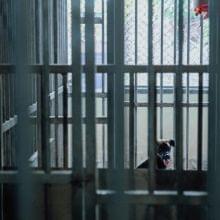No-Kill Policy
The New Paradise for Homeless Animals?
A ban on euthanizing impounded animals will take effect in 2017 in Taiwan.
Is no-kill policy the answer to ending the cycle of pet homelessness?
Pressure is now at tipping point for veterinarians and animal welfare inspectors working at resource-strapped public shelters.
No-kill policy paints a rosy picture that all animals can be saved and kept alive. But Taiwan may be in need of a reality check.
Once there was a dog named Blue.
The name was given by her owner.
Blue wasn’t as blue as her name suggested before she was given up.
The sun went, and darkness unfolded the street in a cool blanket.
Quite suddenly a promise made by Blue’s owner came up in her mind.
“I’ll take care of you, forever and always.”
Blue’s owner not only had given her a name, but also a home.
Pointing at the door behind him, he said:
“This is your home.”
Blue once had a happy time.
But it didn’t last long.
“I’m sorry. I cannot take care of you anymore.”
“But it’s alright. There is no shelter killing now.
You will be in good hands there at the shelter.”
Unwanted and forgotten, Blue spent her days living in a cage.
She thought: “Am I going to live the rest of my life here?”

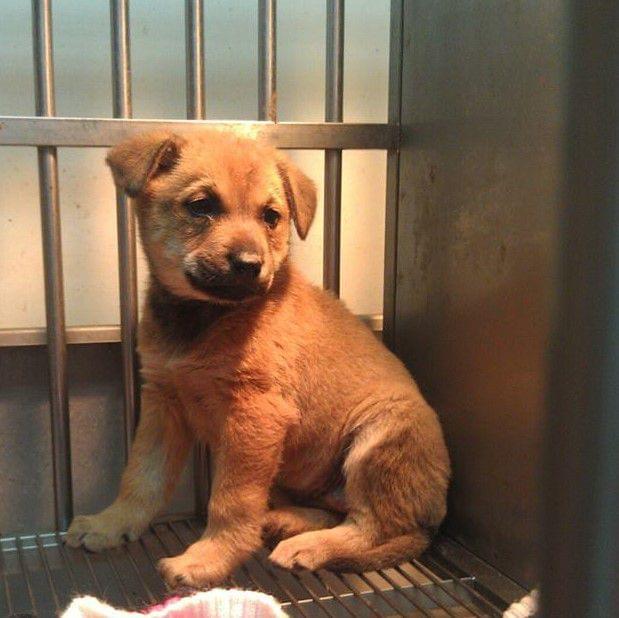
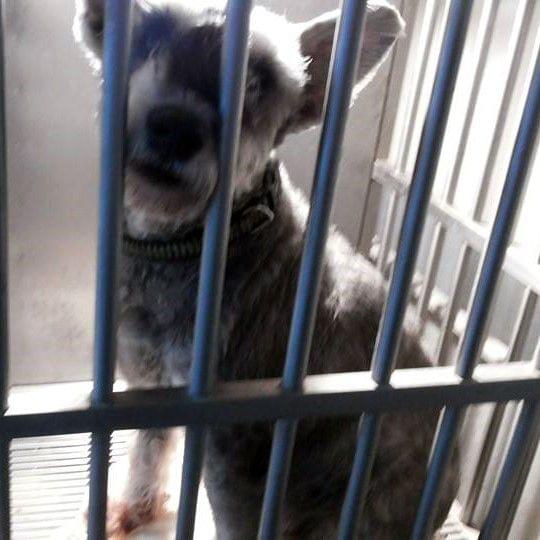
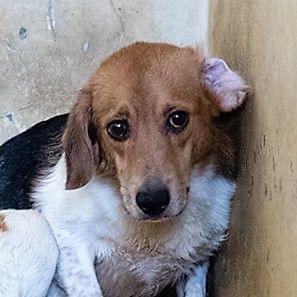
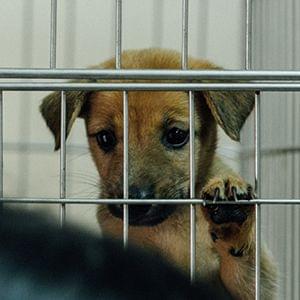
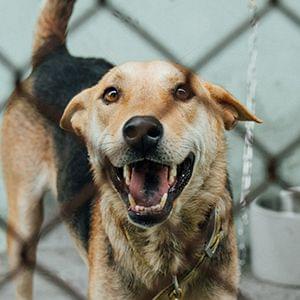
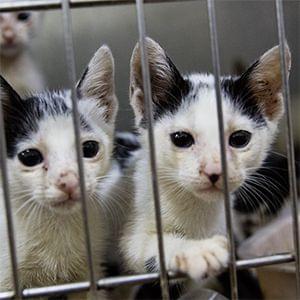

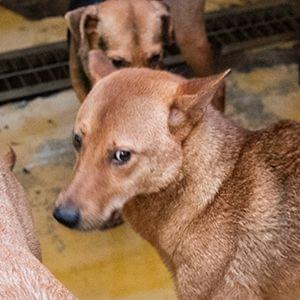
The day for a new owner and a new home never came.
Blue was one of the many animals
stacked in cages at shelters.
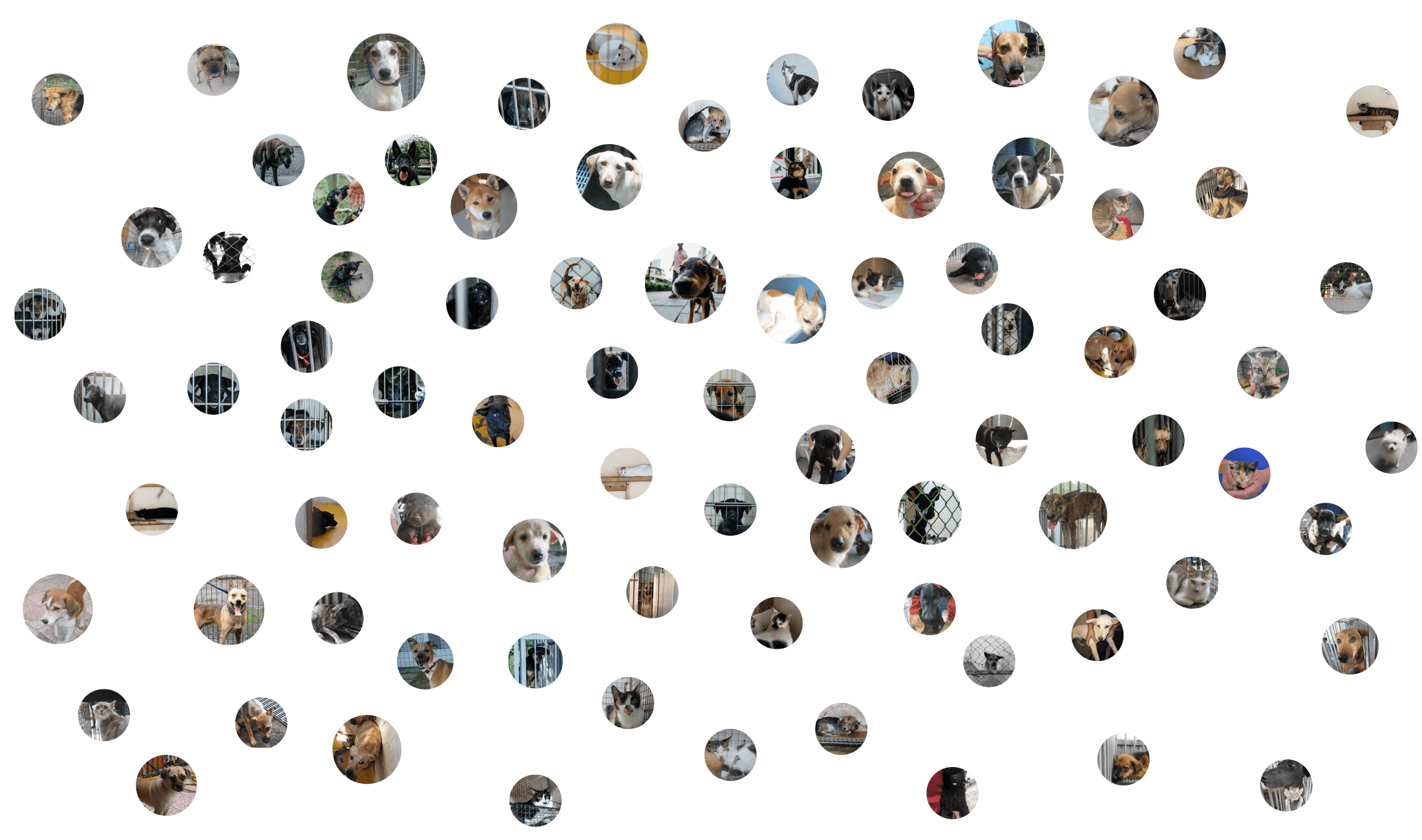
They share the same fate as Blue.
Chapter I
Overcrowded animal shelters under pressure to go no-kill
Overcrowded animal shelters under pressure to go no-kill
The new zero-euthanasia policy will inevitably lead to homeless animals being held in shelters for long periods of time. Yet, there has been a history of allegations of substandard animal care against public shelters. Will the government, with its well-intended ban on killing strays, step up to the plate and deliver on its promise to increase access to adoptable animals and improve facilities?
1-1Low adoption rates blamed on shelters’ hard-to-access locations
Before the passage of the Animal Protection Act, strays were caught and handled by government cleaners based on the Waste Disposal Act. The animals were kept in temporary kennels in the periphery of landfill sites far from the public eye, much like how garbage was disposed, or taken in by public shelters.
Crammed into welded wire kennels and unprotected from sun and rain, many of the strays would eventually die from thirst, hunger and poor living conditions. There were reports of animals cannibalizing on each other or starving to death. The Animal Protection Act adopted in 1998 introduced reforms, and in 2009, the government ordered 14 municipal and county governments to shut down 104 temporary kennels.
Before 1998
Temporary kennels and shelters were typically located in remote, hard-to-access areas or on the outskirts of cities. They might not even have a postal address, so the only way to find their locations was with longitude and latitude.
Temporary Kennels
Animal Shelters
2016
Most animal shelters today are former kennels or shelters that have been renovated to meet the growing number of abandoned and homeless animals. Their faraway locations can cause a burden on visitors and eventually become detrimental to adoption.
Animal Shelters
1-2Shelter facilities in dire need of improvement
Building and running shelters that fit with the natural environment and provide for the welfare and care of animals remains a critical challenge. After a “zero-euthanasia” policy passed the legislature, the government made improvement of animal shelters one of its priorities.
A public works project proposed by the Council of Agriculture in 2013 set out a plan to build 11 new animal shelters and renovate 10 existing ones. Despite government funding provided to the project, few contractors were willing to take on the job because of the shelters’ poor accessibility and concerns over possible protests from residents who did not want shelters to be near their homes for fear of noise and smell.
At shelters without proper housing, animals are kept in cages.
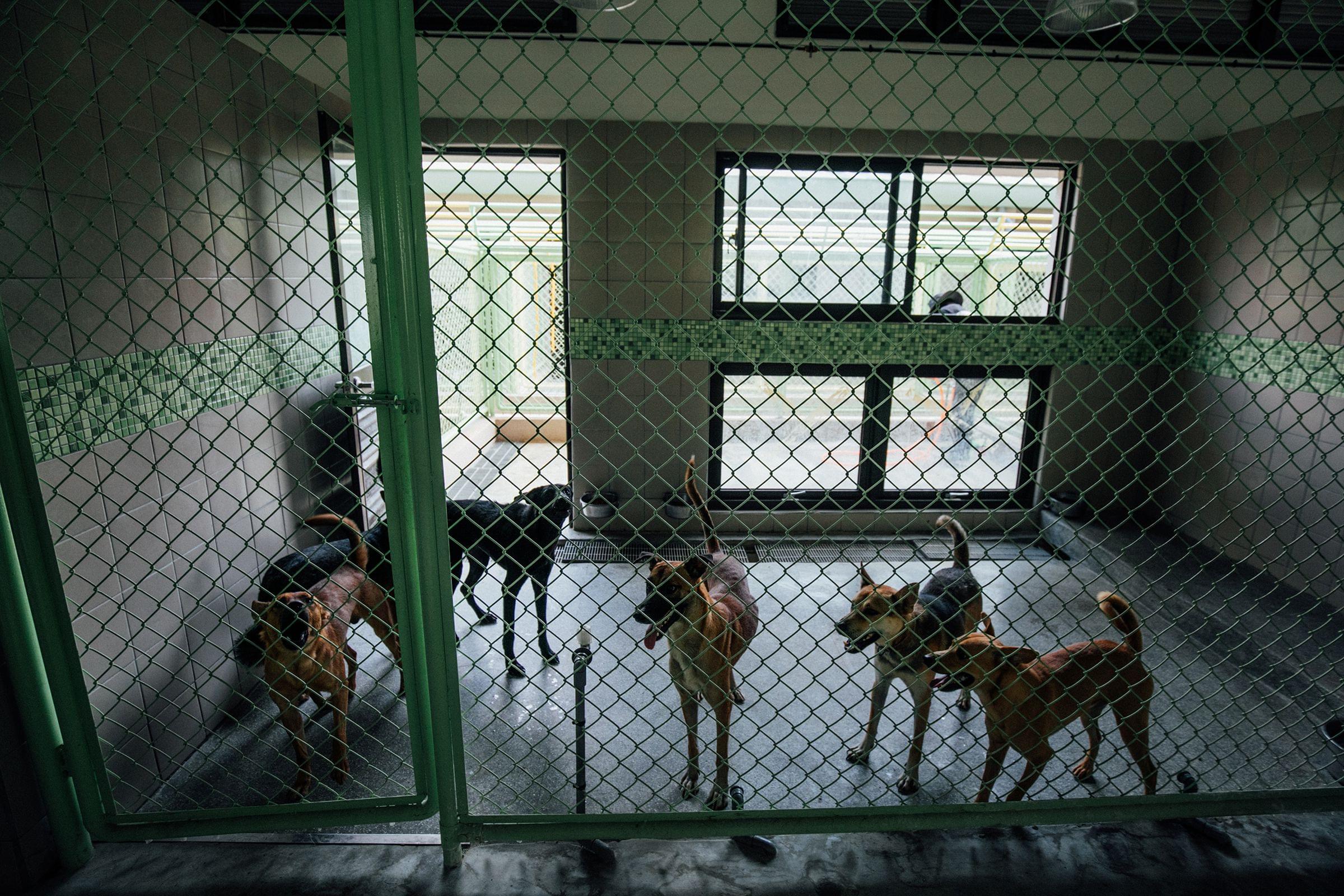
Modern shelters include indoor animal housing areas and outdoor play spaces.
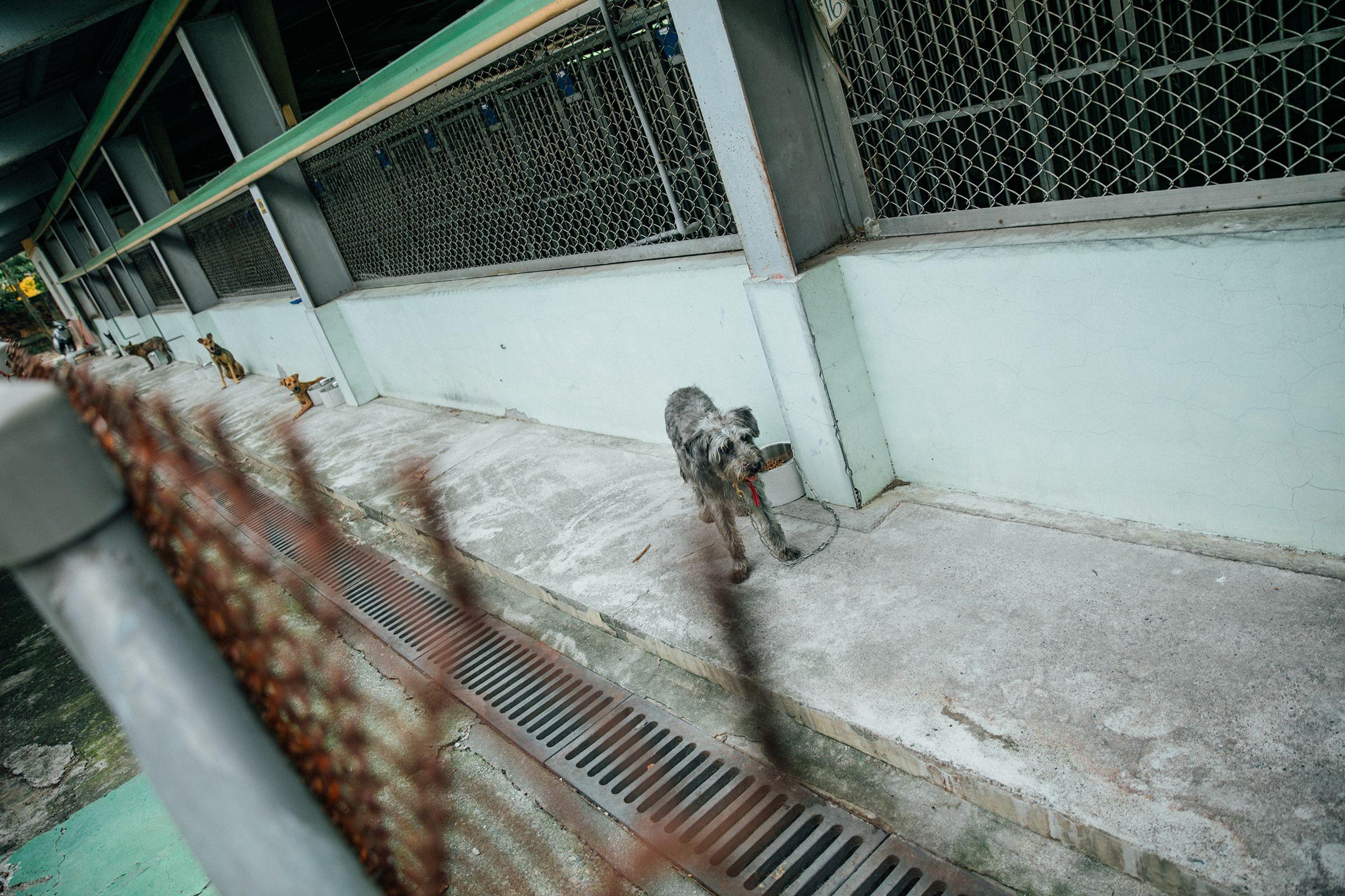
Multiple animal housing areas segregate different groups with different needs.
Budget constraints, building regulations and limited space
are the three main challenges in renovating dog kennel areas.
That fewer cats are admitted into animal shelters than dogs allows flexibility in facility design.
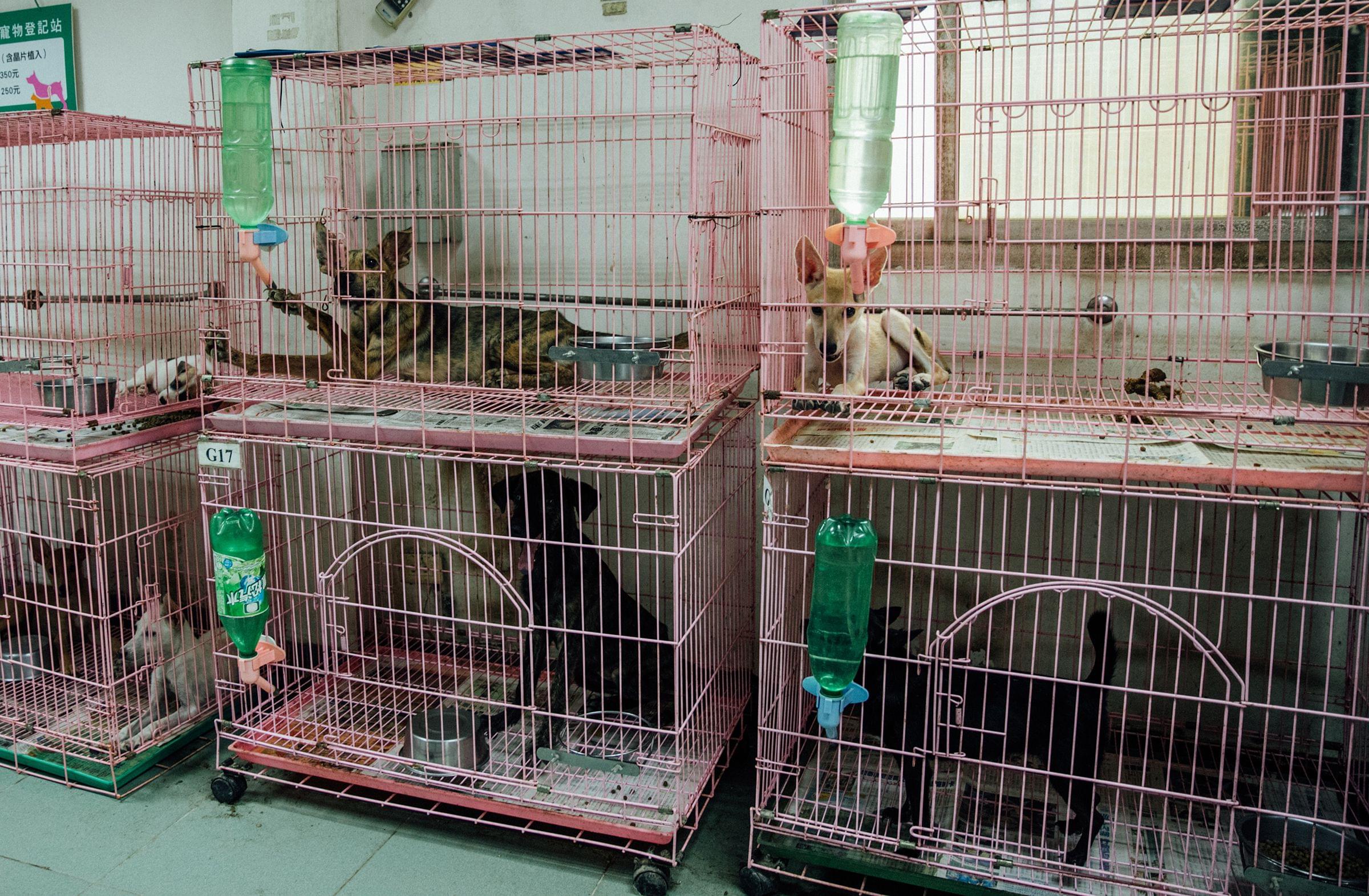
There are special housing areas to separate animals that need special care.
It’s hard to address all the issues that exist with improving older shelter facilities.
Modern shelters feel much less institutional.

It is important to break out of the old thinking about animal sheltering and treat animals in a more open, humane way.
1-3Veterinarians at public shelters
A public animal shelter is normally staffed with only one veterinarian. The veterinarian not only cares for the health of animals, but also has to attend the daily operations of the shelter from cleaning environment to rehoming homeless animals. What is to become of the veterinarian – already hard-pressed to juggle various responsibilities – after the zero-euthanasia policy takes effect?
The homeless animals will be held in shelters for longer periods of times, and the number of animals will inevitably increase; however, medical resources for the shelters are constrained.
The number of animals in the shelter must be controlled, but the public’s complaints make the veterinarians in the shelters feel pressured and powerless.
With limited human resources and heavy workload, the veterinarians in the shelters have no time to follow up the conditions of the animals after adoption.
Chapter II
TNVR efforts impeded by pet abandonment
TNVR efforts impeded by pet abandonment
Stray animals will not disappear after the new zero-euthanasia policy. Most likely they will continue to roam the streets. Then comes TNVR, a method promoted by animal welfare advocates to control the stray population. In TNVR, except for aggressive or dangerous animals that must be caught and securely confined without posing a danger to the public, strays are trapped, spayed, vaccinated and then returned to their outdoor “home” where people learn to co-exist with them. But TNVR is not entirely innocuous.
2-1What is TNVR?
T(Trap)
N(Neuter)
v(vaccination)
R(Return)
2-2Are homeless dogs better off being returned to the streets?
Cities are not safe for homeless animals from an animal welfare perspective. Many animals die from poisons or are hit by cars. The absence of intervention of any owner puts the lives of homeless animals at risk and potentially causing accidents or conflicts.
Prone to accidents
Unable to adapt to the environment
At risk of being poisoned
Posing a threat to native animals
2-3Man-animal conflicts on the rise
Although spaying and neutering helps control the stray population, swarms of dogs and cats continue to roam the streets. Excessive noise, feces or smell, and aggression toward another animal, or even a person, may present safety and health hazards.
Now with shelters transitioning to zero-euthanasia, shelters could be forced to turn away animals due to a lack of capacity. Then comes the issue of living and interacting with a growing stray population.

The Statistics of strays invading poeple.
Data Source: the Council of Agriculture| Unit:item count
Reporting
Inspecting
Persuading
314
188
202
101
93
74
62
87
32
2013
2015
2014

The Statistics of strays invading poeple.
314
cases
Data Source: the Council of Agriculture| Unit:case
188
202
Reporting
101
cases
93
74
87
62
Inspecting
cases
32
Persuading
2013
2015
2014
Cumulative Numbers (Until Aug. 2016)
260 cases
123 cases
127 cases
2-4High sterilization rates required to achieve TNVR effectiveness
Research has suggested that inadequate levels of sterilization are likely to increase the size of stray animal population as the unsterilized animals continue to breed. Even with an active TNVR program, overall population may continue to grow if there is no good control on the number of abandoned or homeless animals. Predictably, to contain stray population is becoming an uphill battle.
The Reporter has created a 30-second game based on a trap-neuter-return (TNR) model developed by Lai Yi-te, who holds a Ph.D in biology from the University of Eastern Finland. With every click representing a sterilization treatment, the game gives an idea of whether TNR is able to catch up to the rates of breeding and abandonment by humans.
Click on a dog icon to do a TNR
to reduce the number of cubs produced.
Lai Yi-te, who holds a Ph.D in biology from the University of Eastern Finland, has developed a computer simulation model to evaluate the effectiveness of TNR strategies applying various assumptions about population dynamics and TNR intensity and consistency. Lai’s model is based on an international research paper on population changes of feral colonies.
The research paper cited by Lai calculates the sterilization rates required to eliminate the population of stray animals eventually. Provided spaying and neutering is done on 50% of the initial population with treatment divided evenly between males and females. Out of a colony of 6,000, 3,000 would need to be sterilized per year, and it takes 15 years to eliminate the colony population when the colony is isolated. If abandoned and untreated, free-roaming animals enter the population (though their numbers are few, just 5% of the initial population), spaying and neutering may reduce but never eliminate the colony population.
Assume there are 500 stray dogs living in an urban area (every dog icon represents 50 stray dogs). The population increases over time as dogs breed and new dogs come in (the number of population is updated every three seconds, which are equal to a year in the real world). The goal is to control population before the size reaches its limit of 5,000, or 100 dog icons.
The game starts off with a female dog giving birth to six cubs per year, the inclusion of two abandoned or free-roaming dogs into the population per year, and a certain number of aged dogs dying of natural causes. It turns out that the game requires 16 clicks in every three seconds in order to keep the dog population within the carrying capacity of its environment.
The game clearly shows the difficulties in managing population growth as TNR hardly catches up to animals’ breeding rates and owners dumping their pets. Lai notes that continued abandonment and free-roaming animals, owned or unowned, are equally problematic.
Chapter III
New “zero-euthanasia” mandate fuels skepticism over readiness
New “zero-euthanasia” mandate fuels skepticism over readiness
Solving the stray animal problem is going to take a multi-faceted approach. Whichever approach is chosen, implementation is key to success. To address stray overpopulation at the source, registration of pet animals, education of pet owners and regulation of breeders must be put in place. After 10 revisions made to the Animal Protection Act, has animal welfare legislation been upheld and enforced, or has it become a lost cause due to implementation issues? What are the problems that exist within and outside of the animal welfare authorities?
3-1Impact of animal law amendments in doubt
Enacted in 1998, the Animal Protection Act has been amended 10 times to date. Has the problem of stray animals been addressed by the revisions? The Reporter’s interviews with law enforcement personnel pointed to a number of factors, including a shortage of staff, that contribute to poor enforcement of animal welfare laws.
Holes in legislation
“Providing a living environment that is safe, clean, well- ventilated, non-flooding with proper and adequate shelter, lighting and warmth”—— Article 5, Animal Protection Act
The rules on pet owners’ responsibilities could be interpreted in different ways. Many owners, when facing a complaint about animal abuse or neglect, argue that allegations of them violating the provision on “providing a living environment that is safe, clean, well- ventilated, non-flooding with proper and adequate shelter, lighting and warmth” (Article 5) are due to different perceptions of animal welfare standards. In such cases, inspectors cannot but advise owners and give notice of potential penalties if noncompliance is found in the future.
“Refusal to take corrective actions after receiving advice about noncompliance”—— Article 31, Animal Protection Act
Previously, penalties were imposed on a pet owner for any failure to comply with mandatory registration of birth, acquisition, transfer, missing or death of his/her pet. After amendments to the Animal Protection Act, the owner cannot be penalized only in the event of his/her “refusal to take corrective actions after receiving advice about noncompliance” (Article 31). This has led to increased workload for inspectors to advise and ensure compliance, with pet owners thinking that they will take a chance as long as they can.
Unclear legislation and increased burden on law enforcement personnel
“A neutering waiver is obtained upon filing a breeding management plan with the local competent authority”—— Article 22, Animal Protection Act
The exception to the spay/neuter provision – provided “a neutering waiver is obtained upon filing a breeding management plan with the local competent authority” (Article 22) – gives pet owners plenty leeway not to neuter their pets as they can request a waiver for any reason. It defeats the purpose of mandatory spaying and neutering.
“Only from pet breeders or traders with permits, and must not trade or transfer such animals to a third party without ID microchip implants”—— Article 22, Animal Protection Act
The Animal Protection Act does not require owners who get their pets from stores/breeders to notify the authorities of a change of ownership through microchip registry, thus making it hard to track the whereabouts of pet animals. The act only demands that animals should be acquired “only from pet breeders or traders with permits, and must not trade or transfer such animals to a third party without ID microchip implants” (Article 22).
“Register the birth, acquisition, transfer, missing and death of a pet…with the local competent authority or the delegated private entity. The local competent authority shall issue an ID tag to each registered pet. Every pet shall get an ID microchip implant”—— Article 19, Animal Protection Act
The act requires that pet owners “register the birth, acquisition, transfer, missing and death of a pet…with the local competent authority or the delegated private entity. The local competent authority shall issue an ID tag to each registered pet. Every pet shall get an ID microchip implant” (Article 19). But there is a widespread lack of awareness about microchipping. Animal registration is undertaken only once and need not be renewed, making it impossible for authorities to regularly assess animals (e.g. well-being). Moreover, enforcement is ineffective due to insufficient staffing.
3-2Animal welfare inspectors grappling with heavy workload and high turnover; full-time inspectors outnumbered by part-time inspectors
There are three types of personnel involved in animal welfare: staff and leadership of public shelters, veterinarians, and animal welfare inspectors. Among them, animal welfare inspectors are tasked with the most difficult responsibilities. In addition to handling animal welfare complaints, they use their veterinary knowledge along with legal and investigation skills to identity breaches of animal welfare standards and requirements, investigate illegal breeding kennels and issue citations.
Working in what their fellow co-workers call a “shitty” position, animal welfare inspectors are exposed first-hand to situations that give rise to feelings of anxiety, personal conflicts, and psychological stress. As the duties as inspector are largely assumed by junior veterinarians, high turnover among inspection staff lead to a persistent gap in knowledge and skills.
Struggling with work overload and short-staffing, animal welfare inspectors are unable to keep pace with increasing demand. As a result, the law is there but it is not enforced.
Take Taoyuan City. There is only one inspector who audits more than 200 pet shops and kennels in the city. The latest data available from the Council of Agriculture showed a total of 61,568 complaints and audits received and carried out throughout Taiwan in 2016, but the number of full- and part-time animal welfare inspectors was 154, meaning that each inspector must handle close to 400 animal care cases.

The annual average workload of an Animal welfare inspector in different counties.
Data Source: the Council of Agriculture
|
Case/Person
=100 case
Miaoli County
3100
Hsinchu City
1486
Taipei City
1007
729
Miaoli
County
Hsinchu
City
Taipei
City
Hsinchu
County
627
597
409
392
Kaohsiung
City
Tainan
City
Taoyuan
City
Taichung
City
367
356
313
222
Hualien
County
Kinmen
County
Penghu
County
Changhua
County
190
145
140
129
New Taipei
City
Keelung
City
Yilan
County
Taitung
County
122
100
93
57
Lienchiang
County
Yunlin
County
Nantou
County
Chiayi
Ciy
21
14
Pingtung
County
Chiayi
County

Miaoli County
The annual average workload of an Animal welfare inspector in different counties.
3100
Source: Council of Agriculture| Case/Person
|
case
=100
Hsinchu City
1486
Taipei City
1007
729
627
597
409
392
367
356
313
222
Miaoli
County
Hsinchu
City
Taipei
City
Hsinchu
County
Kaohsiung
City
Tainan
City
Taipei
City
Taichung
City
Hualien
County
Kinmen
County
Penghu
County
Changhua
County
190
145
140
129
122
100
93
57
21
14
New Taipei
City
Keelung
City
Yilan
County
Taitung
County
Lienchiang
County
Yunlin
County
Nantou
County
Chiayi
City
Pingtung
County
Chiayi
County
Municipal and county governments are hiring more and more part-time workers so that costs of labor can be saved. There are cases where part-time employees outnumber full-time employees.

In 12 counties, part-time employees outnumber full-time employees.
In 12 counties, part-time employees outnumber full-time employees.
Source: Council of Agriculture
% of part-time employees
% of full-time
employees
100%
100%
Hsinchu County
Chiayi City
Full-Time: 0 person
Full-Time: 0 person
Part-Time: 1 person
Part-Time: 1 person
90%
83%
Taoyuan City
Kinmen County
Full-Time: 1 person
Full-Time: 1 person
Part-Time: 9 person
Part-Time: 5 person
82%
80%
New Taipei City
Changhua County
Full-Time: 4 person
Full-Time: 1 person
Part-Time: 18 person
Part-Time: 4 person
80%
73%
Taitung County
Yunlin County
Full-Time: 1 person
Full-Time: 3 person
Part-Time: 4 person
Part-Time: 8 person
69%
67%
Tainan City
Miaoli County
Full-Time: 4 person
Full-Time: 1 person
Part-Time: 9 person
Part-Time: 2 person
67%
63%
Lienchiang County
Kaohsiung City
Full-Time: 1 person
Full-Time: 3 person
Part-Time: 2 person
Part-Time: 5 person

In 12 counties, part-time employees outnumber full-time employees.
Source: Council of Agriculture
% of Full-time
% of Part-time
100%
100%
90%
83%
82%
80%
Hsinchu County
Chiayi City
Taoyuan City
Kinmen County
New Taipei City
Changhua County
Full-Time: 0 person
Full-Time: 0 person
Full-Time: 1 person
Full-Time: 1 person
Full-Time: 4 person
Full-Time: 1 person
Part-Time: 1 person
Part-Time: 1 person
Part-Time: 9 person
Part-Time: 5 person
Part-Time: 18 person
Part-Time: 4 person
80%
73%
69%
67%
67%
63%
Taitung County
Yilan County
Tainan City
Miaoli County
Lienchiang County
Kaohsiung City
Full-Time: 1 person
Full-Time: 3 person
Full-Time: 4 person
Full-Time: 1 person
Full-Time: 1 person
Full-Time: 3 person
Part-Time: 4 person
Part-Time: 8 person
Part-Time: 9 person
Part-Time: 2 person
Part-Time: 2 person
Part-Time: 5 person
3-3Too little power, too many responsibilities
The Animal Welfare Section, responsible for upholding and enforcing animal welfare legislation, faces enormous problems of short staffing and insufficient power vested in it.
The Council of Agriculture consists of six departments: the Department of Planning, the Department of Animal Industry, the Department of Farmers’ Services, the Department of International Affairs, the Department of Science and Technology and the Department of Irrigation and Engineering. The departments are further broken down into 24 sections.
The Animal Welfare Section, one of the units under the Department of Animal Industry, was previously known as the Livestock Administration Section. Its functions span from animal welfare protection to the regulation of animal husbandry industry. Understaffed and poorly coordinated with other agencies due to its low rank in the bureaucratic system, the Animal Welfare Section cannot meet the growing demand for more aggressive enforcement actions.
1998-2008
As there was no central authority coordinating and controlling animal welfare affairs, animal welfare functions were spread across a number of “animal-related” agencies. The Bureau of Animal and Plant Health Inspection and Quarantine and the Department of Animal Industry were delegated with the duties of running public shelters and administering animal welfare regulations, respectively.
Staffing of the Livestock Management Section: nine
Functions: Formulation and administration of animal husbandry laws, regulation of livestock farms, management of the Fund for Animal Husbandry Development, support and supervision of animal husbandry and breeding entities, cooperation with global animal husbandry organizations, development of training and talent exchange programs, protection and welfare of animals, etc.
2009-2016
The Livestock Administration Section was renamed the Animal Welfare Section charged with the additional responsibility of upholding and enforcing animal welfare legislation. The shortage of staff remained one of its biggest challenges.
Staffing of the Animal Welfare Section: nine
Functions: Regulation of pet care, regulation of laboratory animal care, protection and welfare of economic animals, animal sheltering and management, enforcement of animal welfare legislation and its associated policy guidelines, support and supervision of animal rights groups, animal control, cooperation with global animal welfare organizations, development of training and talent exchange programs, etc.
Present –
Animal welfare activists demand that a new department be established in order to differentiate the functions of regulating animal husbandry and enforcing animal protection laws. The Council of Agriculture is reported to consider forming the Animal Welfare Bureau with two sections attached to it. Their proposal is pending the passage of a draft of the Agriculture Organization Act.
Staffing: the number of staff for the planned Animal Welfare Section and Pet Care Section is not available at this time.
Chapter IV
Awareness of responsible pet ownership
Awareness of responsible pet ownership
An increasing number of animals living in the streets are former pets that have either been abandoned or turned loose by irresponsible owners who let them continue reproducing and adding to the stray population. Of what value is all that animal welfare legislation if the government fails to raise awareness about responsible ownership and the dumping of pets cannot be stopped?
4-1Education efforts complicated by urban/rural divide and generational differences
Despite an overall improvement in awareness and attitude of pet owners, the urban-rural divide in concern about animal welfare is significant. In addition, there is a deep difference in the views of the young and the old on care and treatment provided to pet animals. Next are first-hand observations made by animal welfare inspectors interviewed by The Reporter:
“Most of the loose dogs in the countryside are half-feral, half-domesticated. Many farmers pick up stray puppies, raise them as their own and allow their dogs to roam outdoors freely. There is very little bonding, and the owners are not very concerned about their dogs.”
“A lot of dogs in the countryside are not taken care of properly. They are fed on leftovers. Their water bowls get dirty with green algae. If a dog is raised in a poultry farm, it is often fed bad eggs and dead chicken. If it is raised in a cattle farm, it is fed placentas. A dog living in a pig farm is fed dead pig carcasses. It is very hard to change the older people’s habit of giving their dogs whole carcasses.”
“The old folks are probably the most difficult people to communicate with – even more so when it comes to animal welfare. They feel it’s wrong to rid an animal of its reproductive right. Those who send their dogs and cats in for spaying/neutering are mostly young folks. Old people would not do so unless they are at risk of being penalized after repeated complaints from others.”
“A lot of information about animal welfare is on the internet. Many of the older people don’t know how to get online, so they are not aware of the animal shelters that could help. Government cleaners have to make the rounds of roadside gutters and bamboo groves every day to search and clean decomposing carcasses – double-bagged cats hung from bamboo trees and dead dogs left rotting in the gutter, as the folk tradition goes. You must change things around, one step at a time, but the question is: how?”
4-2Dumping of pets owing to high care costs
Many owners choose to dump their pets when they cannot or will not take responsibility for their animals. The cost of owning a pet from food and veterinary care to toys and treats could be overwhelming, especially veterinary bills that increase as pets get older. A single surgery can cost well above NT$10,000. The lifetime cost of veterinary care for a 10-kilogram 15-year-old female dog is estimated to be around NT$210,000.
Note:The treatment prices are varied in each veterinary hospitals. This graphic chart is for reference only.
This graphic chart includes only one-off payments, but illnesses treatment may be continuous.
This graphic chart includes only common illnesses of older dogs. The illnesses treatments are varied for different animal species.
The payments of rabies vaccine and neutering are essential, and the others are optional.
It is important to move beyond the same old story about educating pet owners. Without knowing and addressing the root cause, people too often fix only the surface-level problems. The biggest problem facing Taiwan’s animal welfare authorities is with the collection of data on pet population due to poor enforcement of pet licensing laws and microchip registry.
The problems resulting from no-kill policy are complicated. If you want to explore the issues about animal protection, you can read in-depth reports as follows (all the articles are written in Chinese).
Chapter V
How should the issue with stray animals be addressed?
How should the issue with stray animals be addressed?
The policy on stray animals relates to everyone. Citizen input and consensus of opinion are keys to effective public policy implementation. After you read this report, please feel welcome to leave a comment and vote on others’ comments. Animal advocacy groups will be invited to make comments as well.
Pol.is is a new digital tool for finding and visualizing consensus. In a pol.is conversation, participants write comments in response to an open-ended question and react to each other's comments by voting. Through the use of statistical analysis, pol.is generates real-time visualization showing opinion groups that have formed. After logging in with a social network, people can see how they are grouped with friends and followers they tend to agree with. They can also find the representative comments that separate their group from other groups. By exploring, people gain insights into differences and similarities, thereby expediting the process of reaching consensus.
Authors: 吳凱琳 (Karen Wu)、陳貞樺 (Chen-Hua Chen)、余志偉 (Chih-Wei Yu)、吳逸驊 (Jameson Wu)、方德琳 (Te-Lin Fang)、王珣沛 (Hsun-Pei Wang)、黃禹禛 (Yu-Chen Huang)、吳政達 (Cheng-Ta Wu) | 2016.11.15
Map images: CartoDB Photos in the opening section:桃園新屋收容所

